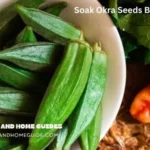Life Tips
Recipes With Pineapple Sage Herb
Pineapple sage, with its vibrant green leaves and intoxicating aroma, is a culinary gem waiting to be discovered. This unique herb, a hybrid of common sage and a tropical sage species, boasts a flavor profile that is both sweet and savory, offering a delightful complexity that can elevate any dish. Its distinct pineapple-like sweetness, coupled with subtle notes of sage, makes it an ideal ingredient for both sweet and savory applications.
This essay of Gardenandhomeguide.com will delve into the versatility of pineapple sage, exploring its diverse uses in various recipes, from appetizers and entrees to desserts and beverages.
A Sweet And Savory Symphony: Recipes With Pineapple Sage Herb
Pineapple sage’s versatility lies in its ability to seamlessly blend with a wide range of flavors. Its sweet, fruity notes complement both sweet and savory dishes, while its subtle sage undertones add depth and complexity. This unique combination makes it a perfect ingredient for adventurous cooks seeking to add a touch of the exotic to their culinary creations.
Appetizers and Sides:
- Pineapple Sage Bruschetta: A simple yet elegant appetizer, this dish highlights the herb’s vibrant flavor. Toasted bread slices are topped with a mixture of softened goat cheese, chopped pineapple sage leaves, and a drizzle of honey. The sweetness of the honey and pineapple sage complements the tangy goat cheese, creating a harmonious blend of textures and flavors.
- Pineapple Sage and Feta Salad: This refreshing salad is perfect for a light lunch or a side dish. A bed of mixed greens is tossed with crumbled feta cheese, chopped pineapple sage leaves, and a light vinaigrette. The salty feta cheese contrasts beautifully with the sweet pineapple sage, while the vinaigrette adds a touch of acidity.
- Pineapple Sage Stuffed Mushrooms: These savory bites are an excellent party appetizer. Button mushrooms are filled with a mixture of cream cheese, chopped pineapple sage leaves, and a sprinkle of Parmesan cheese. The mushrooms are then baked until golden brown and bubbly. The creamy filling is enhanced by the sweet and savory notes of the pineapple sage, creating a delightful flavor combination.
Entrees:
- Grilled Salmon with Pineapple Sage Butter: This dish showcases the herb’s ability to complement seafood. Salmon fillets are grilled to perfection and topped with a flavorful butter made with chopped pineapple sage leaves, lemon juice, and a touch of salt and pepper. The sweet and savory butter infuses the salmon with a delightful flavor, while the lemon juice adds a refreshing touch.
- Roasted Chicken with Pineapple Sage Glaze: This classic dish gets a flavorful upgrade with the addition of pineapple sage. A simple glaze made with honey, soy sauce, and chopped pineapple sage leaves is brushed over the chicken before roasting. The glaze caramelizes during cooking, creating a sweet and savory crust that coats the chicken.
- Pineapple Sage and Pork Tenderloin: This dish combines the sweetness of pineapple sage with the savory richness of pork. Pork tenderloin is marinated in a mixture of pineapple juice, soy sauce, chopped pineapple sage leaves, and garlic. The marinated tenderloin is then roasted until cooked through, resulting in a succulent and flavorful dish.
Desserts and Beverages:
- Pineapple Sage Infused Tea: This refreshing beverage is perfect for a warm afternoon. Fresh pineapple sage leaves are steeped in hot water for a few minutes, releasing their sweet and aromatic flavors. The tea can be enjoyed plain or sweetened with honey or sugar.
- Pineapple Sage Ice Cream: This unique dessert combines the sweetness of pineapple sage with the creamy richness of ice cream. Chopped pineapple sage leaves are added to a basic ice cream recipe, infusing the ice cream with a delightful flavor. The ice cream can be enjoyed on its own or topped with fresh fruit or a drizzle of honey.
- Pineapple Sage Shortbread Cookies: These delicate cookies offer a delightful combination of sweet and savory flavors. The dough is infused with chopped pineapple sage leaves, adding a subtle sweetness and a hint of sage. The cookies are baked until golden brown and crisp, resulting in a delicious treat.
Beyond the Kitchen:
Pineapple sage’s versatility extends well beyond culinary applications, making it a wonderful addition to various DIY projects that bring natural beauty and delightful aroma into your home. Its fragrant leaves can be employed in numerous creative ways, enhancing both the ambiance and the sensory experience of your living space.
Herbal Infusions: Pineapple sage leaves can be infused in oil or vinegar, producing richly flavored condiments that elevate the taste of salad dressings, marinades, and sauces. These infusions not only add a unique twist to your culinary creations but also provide a touch of sophistication to your meals.
Potpourri: When dried, pineapple sage leaves become a valuable component of potpourri blends. Their sweet, herbaceous scent contributes to a soothing and inviting atmosphere, perfect for freshening up any room in your home. This natural fragrance can evoke a sense of tranquility and well-being, making your space feel more welcoming and pleasant.
Herbal Teas: Pineapple sage leaves can be brewed to create a refreshing and aromatic herbal tea. This delightful beverage offers a unique flavor profile, combining the subtle sweetness of pineapple with the earthy notes of sage. It’s a perfect choice for a calming drink that can be enjoyed hot or iced, providing a delightful way to relax and unwind.
Incorporating pineapple sage into these projects not only utilizes its versatile properties but also infuses your home with the fresh, invigorating essence of this remarkable herb.
Growing Pineapple Sage:
Growing pineapple sage is a delightful and straightforward endeavor, making it a rewarding addition to any garden or home landscape. This aromatic herb, known for its pineapple-scented leaves and vibrant red flowers, thrives in warm climates and flourishes when provided with full sun to partial shade. Whether you choose to cultivate it in pots or plant it directly in the ground, pineapple sage is versatile and adaptable.
For optimal growth, it’s important to ensure the plant receives regular watering, especially during dry spells, to keep the soil consistently moist but not waterlogged. Incorporating a balanced fertilizer into the soil will provide the necessary nutrients for robust and healthy development. Additionally, pineapple sage benefits from occasional pruning to encourage bushier growth and prevent old.
By following these simple care guidelines, you can enjoy a flourishing pineapple sage plant that not only enhances your garden’s beauty but also provides a delightful scent and culinary uses.
Conclusion:
Pineapple sage, with its unique flavor profile and versatility, is a culinary treasure waiting to be explored. From appetizers to desserts, this herb offers a delightful range of possibilities, adding a touch of sweetness and complexity to any dish.
Whether you’re a seasoned chef or a home cook, incorporating pineapple sage into your culinary creations will undoubtedly elevate your dishes to new heights. So, embrace the sweet and savory symphony of this remarkable herb and embark on a culinary journey that will tantalize your taste buds and leave you wanting more.






